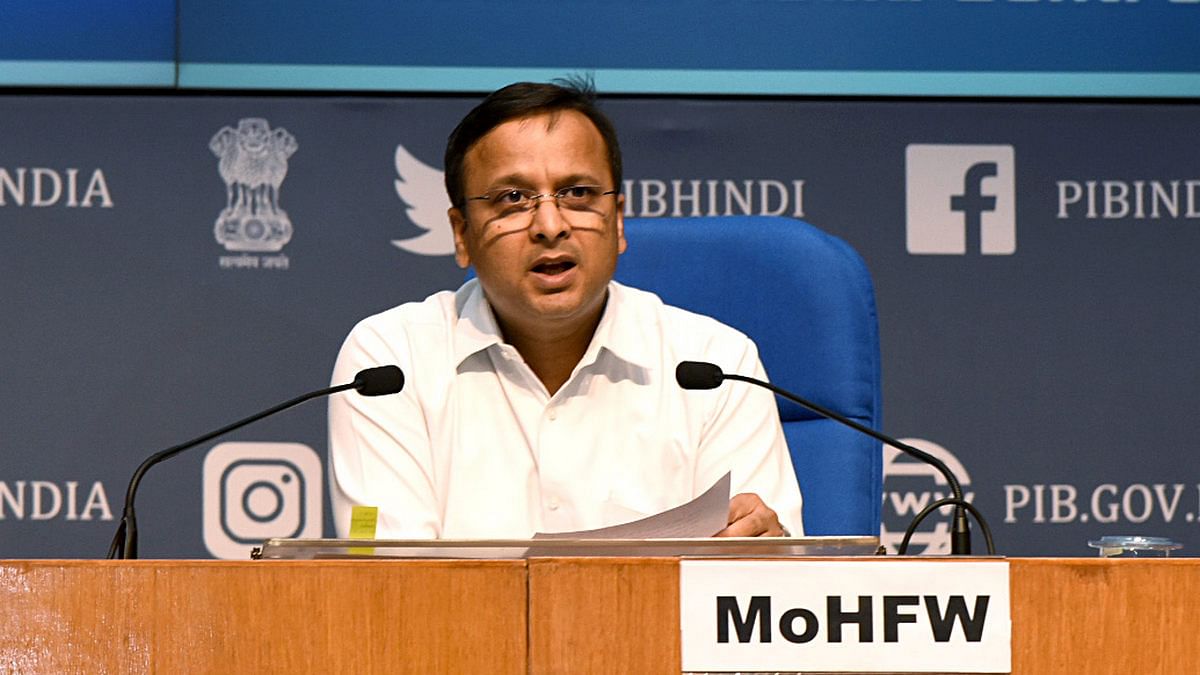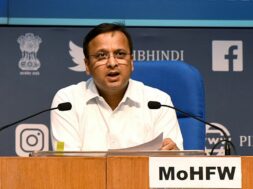
Omicron Could be 500% More Infectious than Delta: Govt Cautioned
Manas Dasgupta
NEW DELHI, Dec 2: As India’s active Covid-19 caseload for the first time fell below the one lakh mark after breaching the line barrier in June 2020, the government on Thursday cautioned that the new Omicron variant could be 500 per cent infectious than the previous Delta.
Addressing a routine press conference on Covid-19 on Thursday, Joint Secretary (MoHFW) Lav Agarwal said the new Omicron variant was possibly 500 per cent more competitively infectious and has more than 2 times the number of bad spike mutations than the Delta variant. He also pointed out the surge in cases globally with Europe contributing to 70 per cent of the cases and advised utmost caution to avoid yet another catastrophe in the country.
“Europe is witnessing a massive rise in cases. The World Health Organisation (WHO) is talking about public health measures. Laxity in public health measures is why there are more cases in Europe. While Germany has more than 75,000 cases, UK has over 47,000 cases. France has reported more than 50,470 cases,” Agarwal said.
He added, “In comparison to this, Southeast Asian region that includes India and 11 other countries, reported only 1.2 Lakh cases in the last one week – only 3.1 per cent of the cases of the world. A decrease in cases is being reported in the Southeast Asian region.”
The health joint secretary further said the low vaccination coverage was leading to high death rates and a rise in cases.
So far, 373 cases of the Omicron variant have been detected in 29 nations, Agarwal said.
“All Omicron related cases are found to have mild symptoms so far…In all such cases in the country and across the world so far, no severe symptom has been noted. WHO has said its emerging evidence is being studied. There are more than 45-52 mutations and 26-32 changes in the spike. The RT-PCR test can be used as an early detection of this mutation. Cell attachment affinity is greater than other variants,” he said.
The government has maintained that passengers arriving from ‘at risk’ countries need to undergo RT-PCR test on arrival. “If found positive for Covid, they will be treated under clinical management protocol. If tested negative, they will follow home quarantine for 7 days,” Agarwal said.
Speaking on the ban on international flights, booster doses and pediatric vaccination, VK Paul, Member-Health, NITI Aayog said, “The Omicron variant of Covid-19 is being carefully examined. We will take decisions on the basis of it, it’s an ongoing discussion within our technical and scientific circles.”
While talking about the Covid-19 cases which continued to show declining trend, Agarwal stated that Kerala and Maharashtra were the two states that have more than 10,000 actives cases. “55 per cent of the cases in the country are reported in these two states. The weekly positivity rate is less than 0.9 per cent in India. Districts where case positivity is more than 5 per cent include Arunachal Pradesh, Kerala and Mizoram,” he said.
However, Agarwal asserted that there has been an increase in the second dose of vaccination. “Several initiatives were taken to increase the number of vaccinations across the country. Today, more than 125 crore vaccinations have been done. As many as 84.3 per cent of the population has been vaccinated with the first dose, while 49 per cent of the eligible adult population is fully vaccinated in India. The vaccination rate stood highest in September this year at 78.69 per cent or 23.60 crore doses. In October, it fell down to 55.77 per cent or 17.29 crore doses,” the health joint secretary said.
Official records showed that India’s active Covid-19 caseload fell below the one lakh mark showing the success of the sustained containment of the Covid-19 pandemic in the country in recent months. For the first time, the active caseload on Thursday stood at 99,763 since it had breached the mark on June 2, 2020, when the country was in the phase of gradual lifting of lockdown that was enforced on March 25 to mitigate the spread of the Covid-19 pandemic. Active Covid-19 cases thereafter kept rising till September 19, when the number of ‘currently infected’ persons stood at 10,11,104.The active caseload showed the actual pressure on the country health infrastructure at any given time.
During the second wave of the Covid-19 pandemic, the daily cases went past four lakhs. The Delta variant detected in December 2020 was found to be responsible for the massive surge in Covid-19 cases that pushed the active caseload in India to over 37 lakh on May 07 this year, according to Worldometer.
The impact of the second wave was so big that several states continued to report a high number of daily infections despite the pandemic showing a nationwide retreat.
The Ministry of Health and Family Welfare on Thursday said the active cases accounted for just 0.29 per cent of total cases the lowest since March 2020. Overall, 9,765 fresh Covid-19 cases were reported in India on Wednesday. During the 24-hour period, 8,548 people were declared ‘recovered’ from Covid-19.
The daily rise in fresh coronavirus infections has been below 20,000 for 55 days. India has seen less than 50,000 daily cases for 157 consecutive days as of Thursday.
The national Covid-19 recovery rate has improved to 98.35 per cent the highest since March 2020, the ministry said. The daily positivity report has remained below two per cent for the 59 days with the weekly positivity rate staying below one per cent for 18 days.













